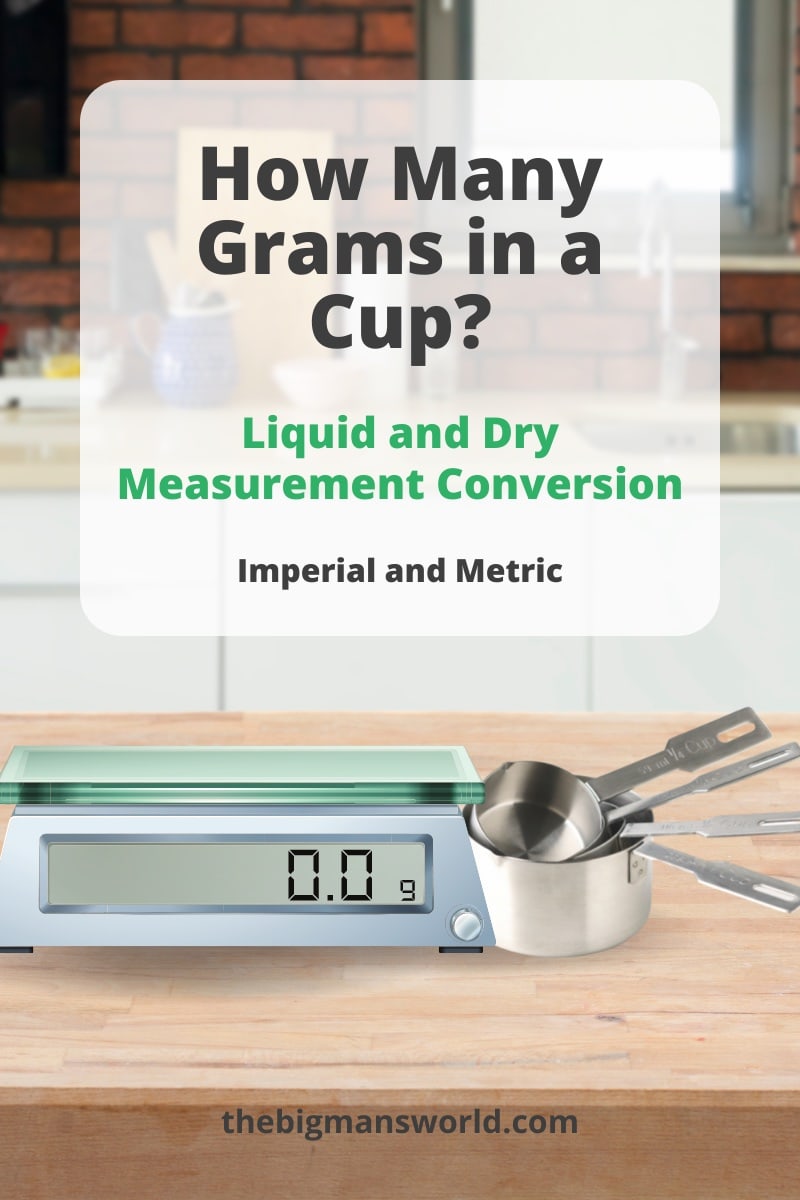What are grams?
Grams (g or gm) is a unit of weight or mass used in the metric measurement system. There are 1000 milligrams in one gram and 1000 grams in 1 kilogram. Most countries recognise this form of measurement. The ingredients you buy will usually come in these quantities too. 1 cup of flour weighs 120 grams; however, 1 cup of milk weighs 240 grams. This is because milk is heavier than flour, even though they occupy the same amount of space in the cup. The charts below will assist you in converting cups to grams based on the weight of a variety of commonly used cooking and baking ingredients. The United States uses the US customary system of measurement which is based on the imperial system. Weight is measured in ounces instead, but can also be converted to grams.
What is a cup?
“Cups” are a unit of measurement that is accepted by all systems of measurement. The actual capacity of a cup varies slightly from country to country. In the US customary system of measurement a standard cup is half a pint, which equates to 16 tablespoons or 240 milliliters. In the metric system, a cup is equal to 250 millilitres.
How many grams in a liquid cup?
Most liquid ingredients (water, milk, tea etc) have a very similar weight, so a more universal conversion can be calculated for any liquid. 1 milliliter of most liquids equates to 1 gram of weight, as represented in the chart below. e.g. 1 US cup = 240g = 240ml. If adjusting for a metric cup (Australia, international), there will be 250 g in a cup. A UK imperial cup has the capacity for 284 g of a liquid.
How many grams in a US cup of dry ingredients?
Dry ingredients, however, can be of varying weight based on their mass and density. A chart has also been included to help you calculate popular dry ingredient conversions.
Other common ingredient conversions
The following conversion chart will easily convert cups to grams for some of the most used baking and cooking ingredients.
How many grams in a metric cup?
How many grams in the UK imperial cup?
Can you measure grams with a scale?
A kitchen scale is a highly recommended option for measuring ingredients for baking or cooking. Benefits of using a kitchen scale include:
Accuracy. There is very little room for error and the weight is as accurate as can be. Utilizes all kinds of units. A basic scale can offer fluid ounces, ounces, ml, and grams. No mess. There are no measuring cups to wash or bowls to rinse out.
More cooking resources
How many ounces in a cup How many grams in an ounce How many teaspoons in a tablespoon How many liters in a gallon How many tablespoons in a cup
